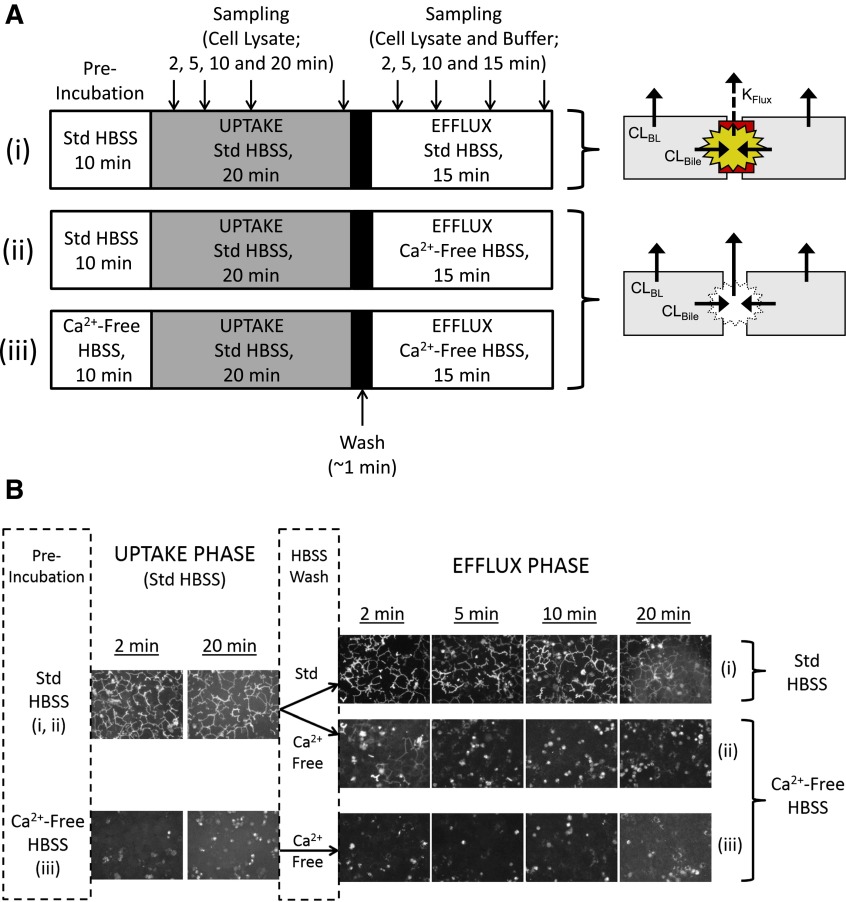Fig. 1.
(A) Scheme depicting preliminary studies designed to evaluate and optimize tight junction modulation throughout the uptake/efflux protocol in the presence of standard (Std; +Ca2+) Hanks' balanced salt solution (HBSS) (i) and two potential schemes for conducting efflux in Ca2+-free conditions: (ii) preincubation and uptake exclusively in Std HBSS, followed by a brief wash and efflux in Ca2+-free HBSS; or (iii) maintaining open tight junctions throughout the study period by preincubating in Ca2+-free HBSS, then performing an uptake phase in Std HBSS to provide relief from the removal of Ca2+, followed by a brief wash and efflux in Ca2+-free HBSS. Gray shading represents inclusion of substrate in HBSS during the uptake phase. Cell schemes on the right represent the intended condition of the SCH system during the efflux phase, with arrows depicting the potential pathways leading to substrate efflux from cells + bile (i) and cells (ii and iii), where CLBL represents basolateral efflux, CLBile represents biliary excretion, and KFlux represents flux from the bile networks (cells + bile only). (B) Fluorescence intensity of carboxydichlorofluorescein (CDF) in bile networks observed after administration of 1 μM CDF diacetate (CDFDA) according to the schemes depicted in (A).

